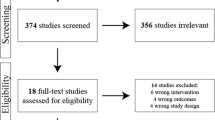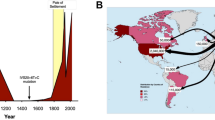Abstract
Objective
Familial dysautonomia (FD) is a rare inherited autosomal recessive disorder with abnormal somatosensory, enteric, and afferent autonomic neurons. We aimed to define the incidence of gastrointestinal bleeding and its associated risk factors in patients with FD.
Methods
In this retrospective case–control study, we identified all episodes of gastrointestinal bleeding in patients with FD, occurring over four decades (January 1980–December 2017), using the New York University FD registry.
Results
We identified 104 episodes of gastrointestinal bleeding occurring in 60 patients with FD. The estimated incidence rate of gastrointestinal bleeds in the FD population rate was 4.20 episodes per 1000 person-years. We compared the 60 cases with 94 age-matched controls. Bleeding in the upper gastrointestinal tract from gastric and duodenal ulcers occurred most frequently (64 bleeds, 75.6%). Patients were more likely to have a gastrostomy (G)-tube and a Nissen fundoplication [odds ratio (OR) 3.73, 95% confidence interval (CI) 1.303–13.565] than controls. The mean time from G-tube placement to first gastrointestinal bleed was 7.01 years. The mean time from Nissen fundoplication to bleed was 7.01 years. Cases and controls had similar frequency of intake of nonsteroidal antiinflammatory drugs (NSAID) and selective serotonin reuptake inhibitors (SSRI).
Conclusion
The incidence of gastrointestinal bleeding in the pediatric FD population was estimated to be 4.20 per 1000 person-years, 21 times higher than in the general pediatric population (0.2 per 1000 person-years). Patients with FD with a G-tube and a Nissen fundoplication had a higher risk of a subsequent gastrointestinal bleeding.


Similar content being viewed by others
References
Norcliffe-Kaufmann L, Slaugenhaupt SA, Kaufmann H (2017) Familial dysautonomia: history, genotype, phenotype and translational research. Prog Neurobiol 1(152):131–148
Norcliffe-Kaufmann L, Palma JA, Kaufmann H (2016) Mother-induced hypertension in familial dysautonomia. Clin Auton Res 26(1):79–81
Norcliffe-Kaufmann L, Axelrod FB, Kaufmann H (2013) Developmental abnormalities, blood pressure variability and renal disease in Riley Day syndrome. J Hum Hypertens 27(1):51–55
Palma JA, Norcliffe-Kaufmann L, Perez MA, Spalink CL, Kaufmann H (2017) Sudden unexpected death during sleep in familial dysautonomia: a case–control study. Sleep. https://doi.org/10.1093/sleep/zsx083
Macefield VG (2018) Founder mutation in IKBKAP gene causes vestibular impairment in familial dysautonomia. [cited 2021 Oct 10]; Available from: https://repository.mbru.ac.ae/handle/1/243
Palma JA, Mendoza-Santiesteban C, Norcliffe-Kaufmann L, Kaufmann H (2017) Familial dysautonomia: A disease with hidden tears (P5.305). Neurology [Internet]. [Cited 2021 Oct 10]; 88(16 Supplement). Available from: https://n.neurology.org/content/88/16_Supplement/P5.305
Carbidopa for Afferent Baroreflex Failure in Familial Dysautonomia. Hypertension [Internet]. [Cited 2021 Oct 10]. Available from: https://www.ahajournals.org/doi/full/. https://doi.org/10.1161/HYPERTENSIONAHA.120.15267
Ramprasad C, Norcliffe-Kaufmann L, Palma JA, Levy J, Zhang Y, Spalink CL et al (2021) Frequency and burden of gastrointestinal symptoms in familial dysautonomia. Clin Auton Res 31(1):109–116
Vandenbroucke JP, von Elm E, Altman DG, Gøtzsche PC, Mulrow CD, Pocock SJ et al (2007) Strengthening the reporting of observational studies in epidemiology (STROBE): explanation and elaboration. PLOS Med 4(10):e297
Grimaldi-Bensouda L, Abenhaim L, Michaud L, Mouterde O, Jonville-Béra AP, Giraudeau B et al (2010) Clinical features and risk factors for upper gastrointestinal bleeding in children: a case-crossover study. Eur J Clin Pharmacol 66(8):831–837
Riley CM, Day RL, Greeley DM, Langford WS (1949) Central autonomic dysfunction with defective lacrimation; report of five cases. Pediatrics 3(4):468–478
Gyepes MT, Linde LM (1968) Familial dysautonomia: the mechanism of aspiration. Radiology 91(3):471–475
Sundaram V, Axelrod FB (2005) Gastroesophageal reflux in familial dysautonomia: correlation with crisis frequency and sensory dysfunction. J Pediatr Gastroenterol Nutr 40(4):429–433
Luman W, R-Kwek K, Loi KL, Chiam MA, Cheung WK, Ng HS (2001) Percutaneous endocopic gastrostomy-indications and outcome of our experience at the Singapore general hospital. Singapore Med J 42(10):460–465
Elkayam L, Matalon A, Tseng CH, Axelrod F (2006) Prevalence and severity of renal disease in familial dysautonomia. Am J Kidney Dis 48(5):780–786
Schrag S, Sharma R, Jaik N, Seamon M, Lukaszczyk J, Martin N et al (2008) Complications related to percutaneous endoscopic gastrostomy (PEG) tubes. A comprehensive clinical review. J Gastrointest Liver Dis JGLD 16:407–418
Richter JE (2013) Gastroesophageal reflux disease treatment: side effects and complications of fundoplication. Clin Gastroenterol Hepatol 11(5):465–471
Huang JQ, Sridhar S, Hunt RH (2002) Role of helicobacter pylori infection and non-steroidal anti-inflammatory drugs in peptic-ulcer disease: a meta-analysis. Lancet 359(9300):14–22
Paton C, Ferrier IN (2005) SSRIs and gastrointestinal bleeding. BMJ 331(7516):529–530
Funding
NIH, T32-DK007740, Chethan Ramprasad, NIH, K23 DK119544, Lea Ann Chen
Author information
Authors and Affiliations
Corresponding author
Ethics declarations
Conflict of interest
On behalf of all authors, the corresponding author states that there is no conflict of interest. Familial Dysautonomia Foundation.
Rights and permissions
Springer Nature or its licensor (e.g. a society or other partner) holds exclusive rights to this article under a publishing agreement with the author(s) or other rightsholder(s); author self-archiving of the accepted manuscript version of this article is solely governed by the terms of such publishing agreement and applicable law.
About this article
Cite this article
Ramprasad, C., Palma, JA., Norcliffe-Kaufmann, L. et al. Gastrointestinal bleeding in children with familial dysautonomia: a case–control study. Clin Auton Res 33, 87–92 (2023). https://doi.org/10.1007/s10286-023-00925-1
Received:
Accepted:
Published:
Issue Date:
DOI: https://doi.org/10.1007/s10286-023-00925-1




